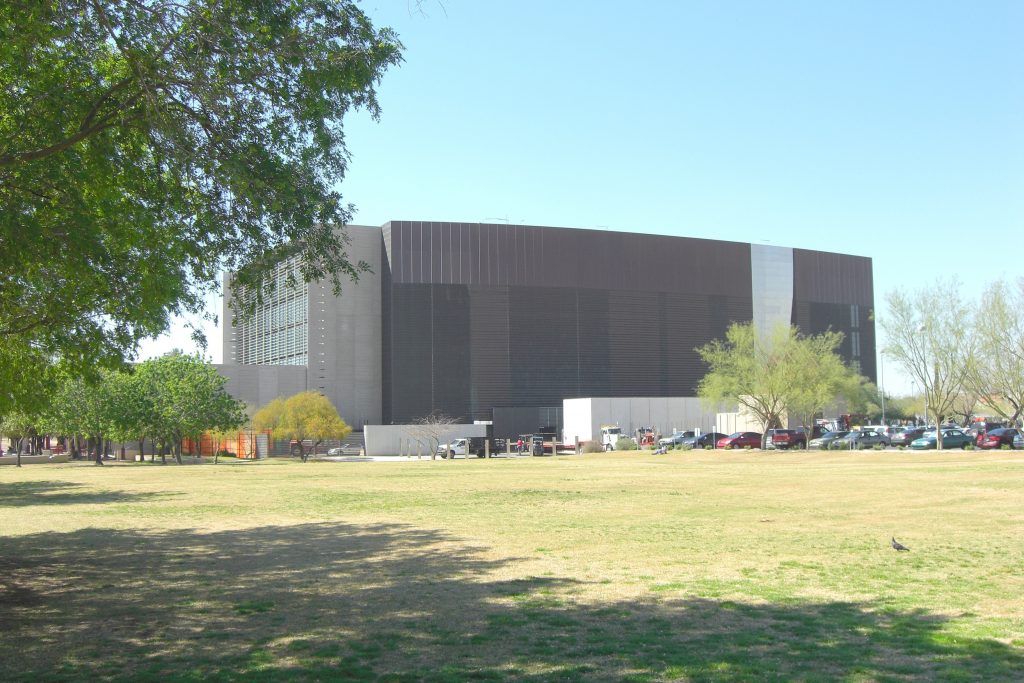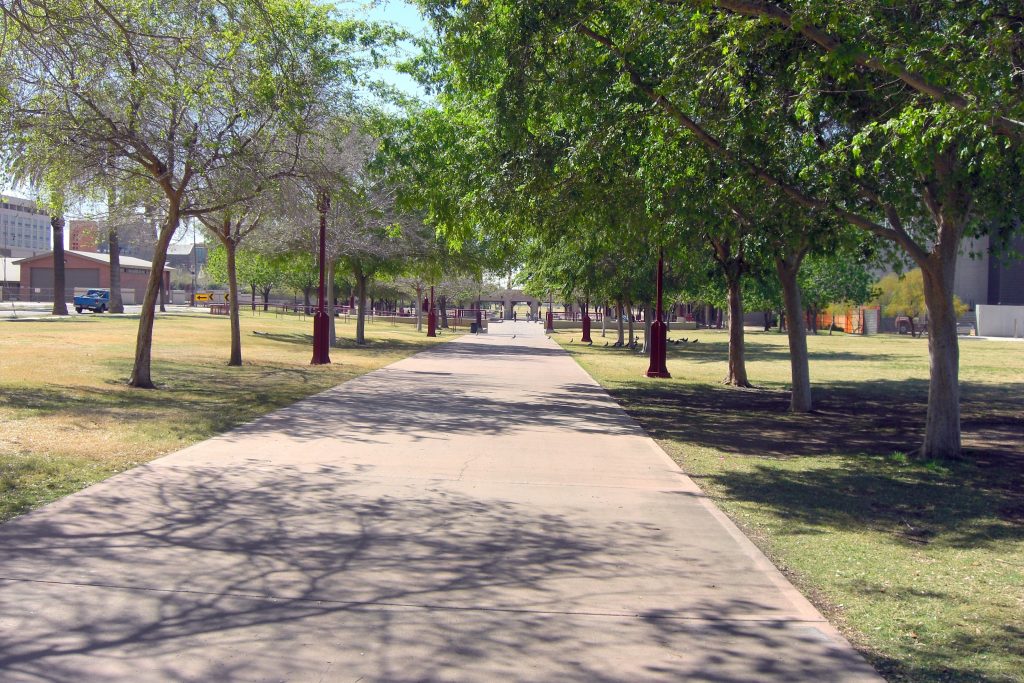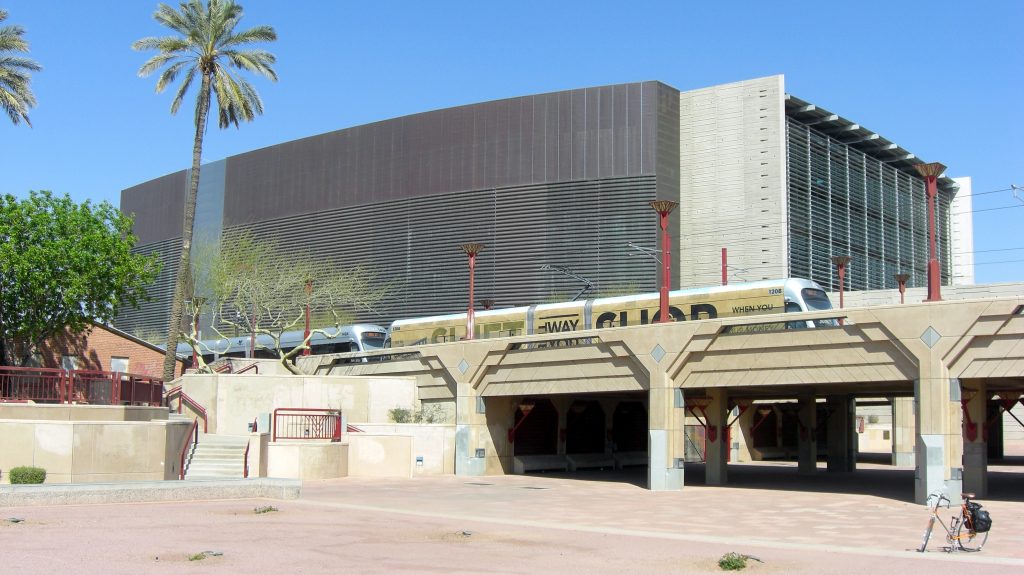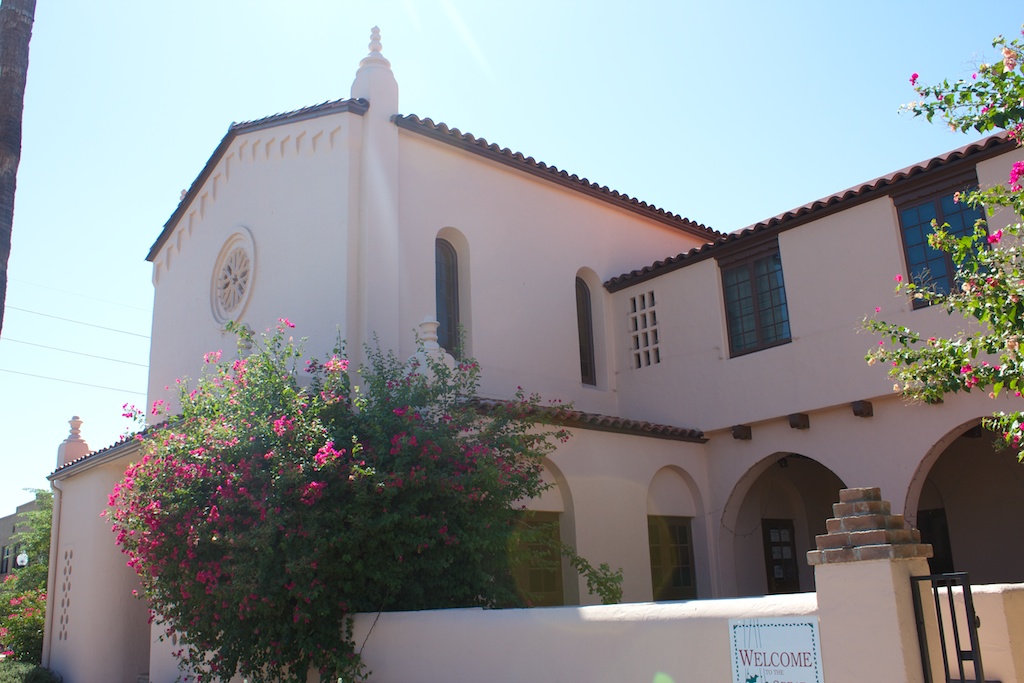One of Phoenix’s first suburban neighborhoods, Palmcroft (on the south side of Palm Lane) was developed in 1927 and Encanto (on the north side of Palm Lane) was developed in 1928. These neighborhoods were conceived as oases of suburban calm. Urban flight did not affect Encanto-Palmcroft until after World War II. In the 1960s, the City of Phoenix subscribed to the Wilbur Smith Plan for Freeways in Maricopa County, which led to the adoption of the doctrine that there was “no residential [development] worth saving south of Thomas Road.”
In 1966, the first public hearings for the newly conceived Papago Freeway were held. The original design had the freeway soaring 100 feet above the central Phoenix skyline. Two years later, in 1968, the Papago Freeway became a part of the new National Interstate Highway System as Interstate 10, opening the floodgates for Federal funding. To make way for this project, 2,920 homeowners had to be displaced.
To combat the Papago Freeway, the Citizens for Mass Transit – Against Freeways coalition, created by Phoenix College professor Dr. Gerard Judd, organized its strategy to block the freeway from bisecting central Phoenix. All of the homes from Central Ave and McDowell Road to 19th Ave and Thomas Road were organized as the Encanto Citizens Association. From 1970 to 1973, the Encanto Citizens Association held informational public meetings at Phoenix Central Library, informing citizens about the Papago Freeway and the latest developments. Encanto Citizens Association hired busses to shuttle people to City meetings to show opposition to the Papago Freeway. Citizens appeared at all public ADOT meetings to protest the design and destruction of homes and lives in the Moreland Corridor.
Following opposition from community members including Eugene C. Pulliam, then the publisher of The Arizona Republic newspaper, the Phoenix City Council, under pressure, referred a ballot question to Phoenix voters in May 1973 about the Papago Freeway. 53% of voters opposed the freeway and the City Council requested that the Federal Government abandon the Papago Freeway plan. Two significant buildings, Kenilworth School and the Great Arizona Puppet Theater (originally built as the LDS Second Ward Church), were placed on the National Register of Historic Places. Unfortunately, after the death of Mr. Pulliam, a second vote on the Papago Freeway was held. The 1975 results reversed the 1973 election results and the freeway was back under consideration but without the massive helicoils at 5th Avenue and 5th Street.
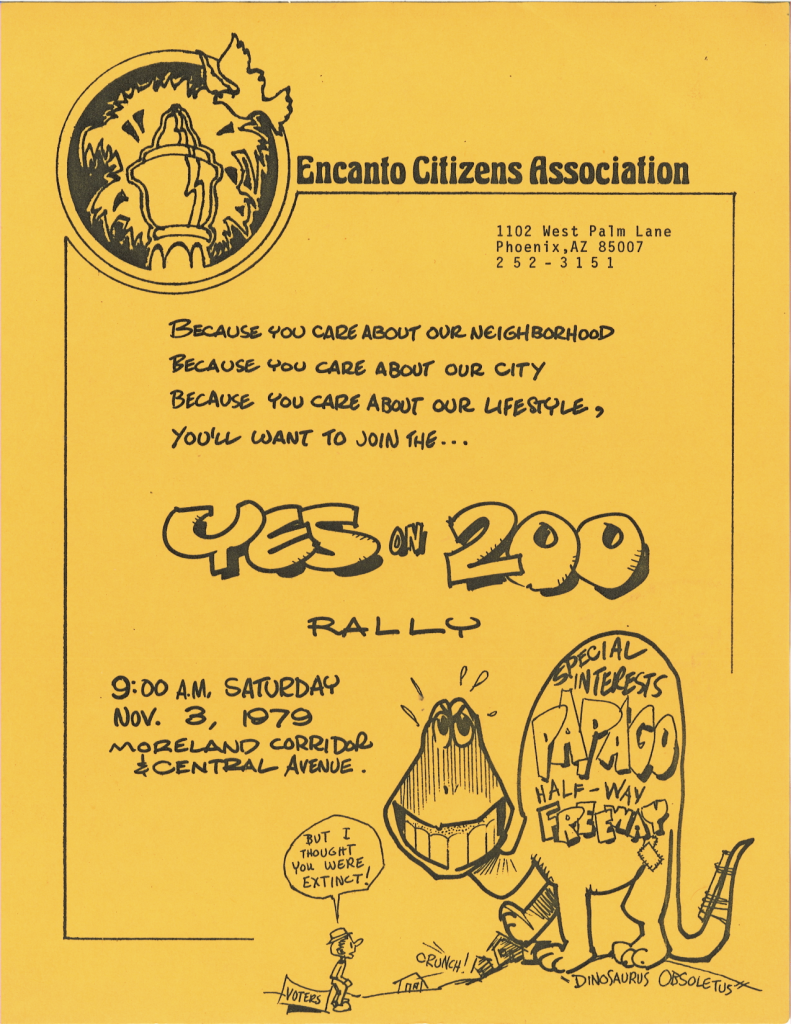
A citizen initiative by Dr. Bob Hurt in 1979, called Proposition 200, wanted to take money originally slated for the Papago Freeway and spend it on parkways, streets, and expanded public transportation. The measure was defeated.
After many years and great citizen input, Interstate 10 opened in 1990 in a vastly different form than originally proposed in the late 1960s. We enjoy amenities like the 32.5-acre Hance (Deck) Park, the Great Arizona Puppet Theater, Phoenix’s Burton Barr Central Library, among other historic and cultural gems.
